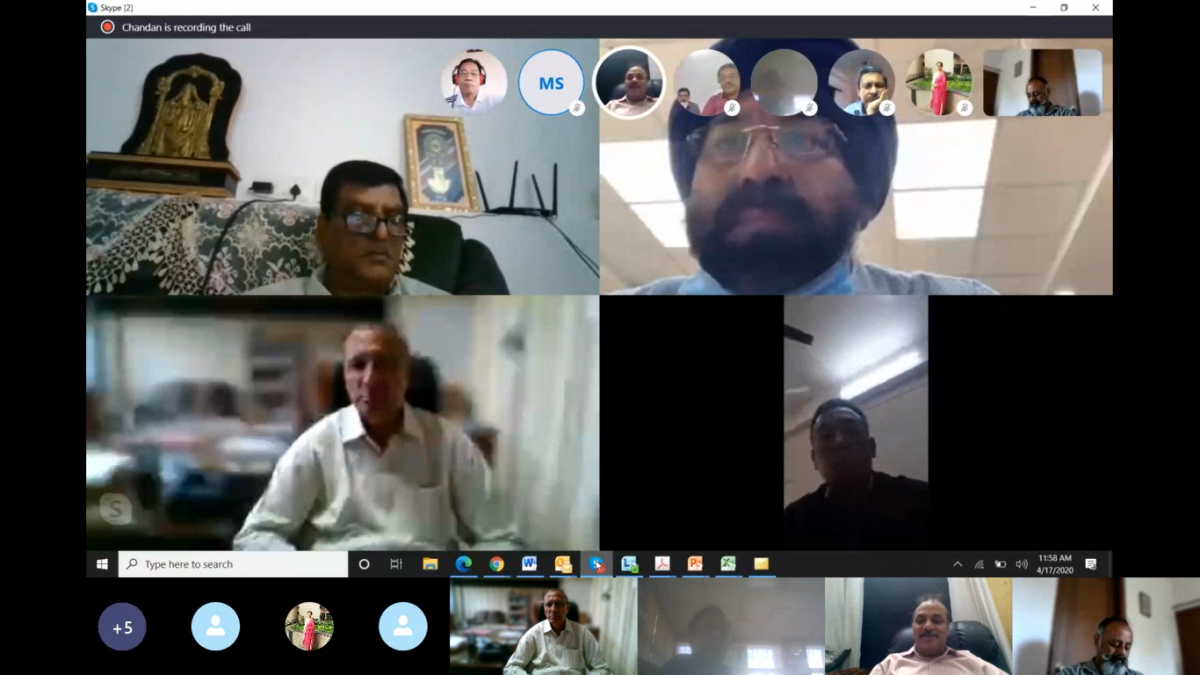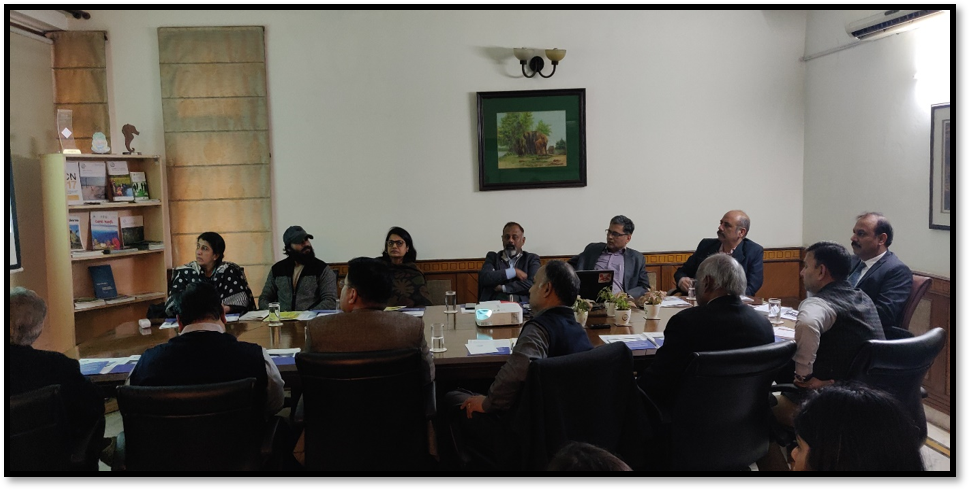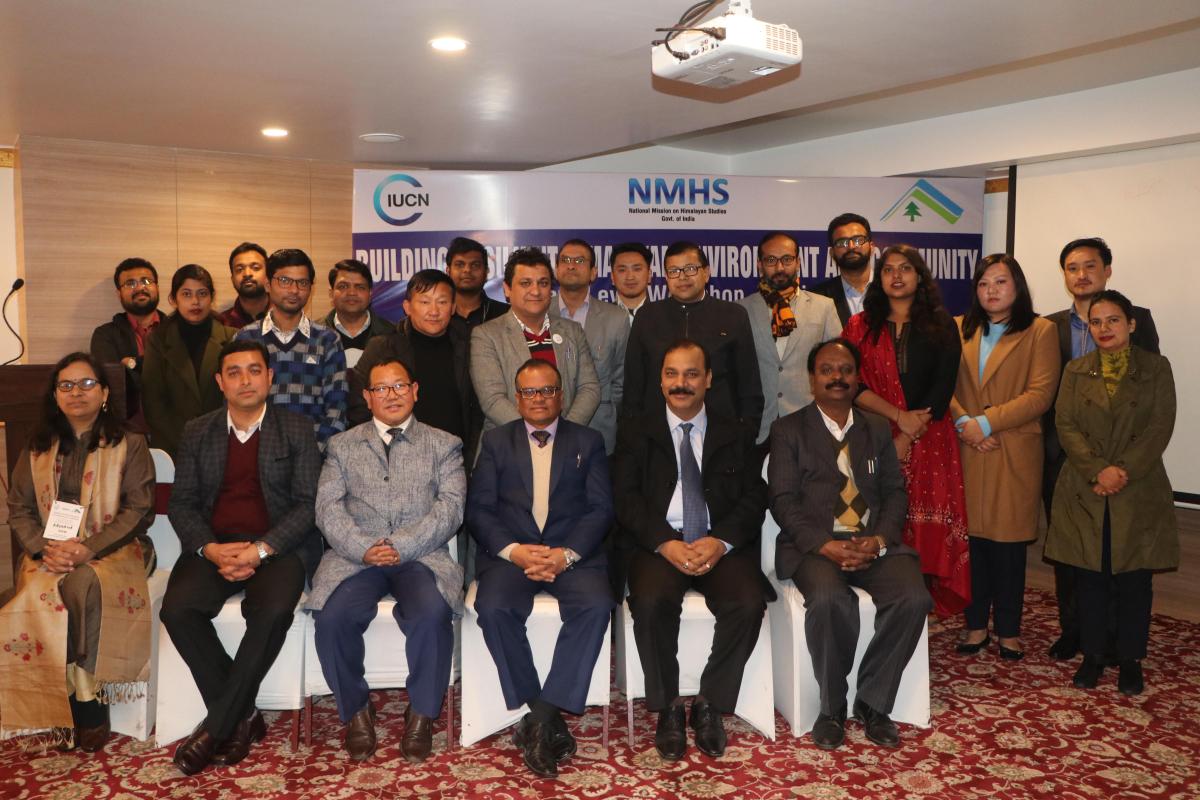IUCN organized a skype meeting on Bonn Challenge- 1st meeting with Nodal officers on sensitization of different components of implementing, monitoring and reporting country-specific Bonn Challenge pledges on 17 April 2020
On Friday, 17 April 2020, Skype meeting with designated nodal officials from State Forest departments and Government officials from National Afforestation and Eco-Development Board (NAEB) was held to apprise the nodal officers about IUCN-MoEFCC project on Bonn Challenge and also to build their understanding and capacities on the methodologies and reporting mechanism related to the project.

Photo: @IUCN India
The meeting commenced with a quick round of introduction of all the participants. Dr. Vivek Saxena, Country Representative, IUCN welcomed all the participants in the Skype meeting and gave an overview of the Bonn Challenge project. He gave a brief introduction of Bonn Challenge wherein he mentioned that Bonn Challenge was launched by the Government of Germany and IUCN in 2011; with Global goal of bringing 200 million hectares under Forest Landscape Restoration (FLR) by 2020 and 350 million hectares by 2030. IUCN is the global Secretariat for Bonn challenge reporting. He also briefed everyone on the underlying approach of Bonn Challenge, which is Forest Landscape Restoration, and what all it comprises of. India also pledged 21 million hectares under FLR by 2030 during Paris Climate Change Agreement in 2015. Hon’ble Prime Minister during United Nations Convention to Combat Desertification (UNCCD) COP- 14 announced that India will bring additional 5 million hectares under restoration by 2030. .
Shri Pankaj Asthana, IGF, NAEB also welcomed everyone on behalf of NAEB and briefed that IUCN, being the reporting secretariat would support NAEB and the ministry in its annual Bonn Challenge reporting and also capacity building of States in reporting and ROAM exercise (Restoration Opportunities and Assessment Methodology). He informed the participants of the targets to be achieved under Bonn Challenge and also explained the primary principles of Forest Landscape Restoration. In context to data requirement for reporting by States, he requested the nodal officers to fill up and update the data in the standard format for Global reporting, that IUCN has shared with all of them in the excel sheet. He also highlighted that the vision document of ministry also talks about increasing our annual afforestation target and the aim of the vision 2024 is to have 253 crores of seedlings planted annually by 2024 so that’s why we have to make extra efforts for afforestation.
Dr. N M Ishwar, gave a brief presentation on IUCN and its work across a wide range of themes related to conservation, environmental and ecological issues. In his presentation he also highlighted the ongoing initiatives of IUCN India.
Ms Manpreet Kaur gave a detailed presentation on Bonn Challenge. She started her presentation by explaining the project “Enhanced Capacity Building of Stakeholders and State Governments on Forest Landscape Restoration and Reporting Mechanism on Bonn Challenge” and also explained the objectives of the project. The International and the National targets towards Bonn Challenge were described and the two dimensions of Bonn challenge i.e Forest Landscape Restoration (FLR) and Restoration Opportunity Assessment Methodology (ROAM) were discussed in detail. As one of the objective of this project is national level reporting, Ms Kaur also emphasized on the progress tracking tool called Bonn Challenge Barometer and explained the officials through online presentation as to how and what kind of data/parameters as per definition in guidance document , already shared would be needed to feed into the online tool.
During the meeting, IUCN clarified the queries from the nodal officers and also provided useful insights and information to aid in the development of the project. The meeting was quite good, productive and effective and provided a platform to inform the states on the project and get their inputs. In the end, Dr. Saxena thanked everyone towards the formal closing of the meeting.



